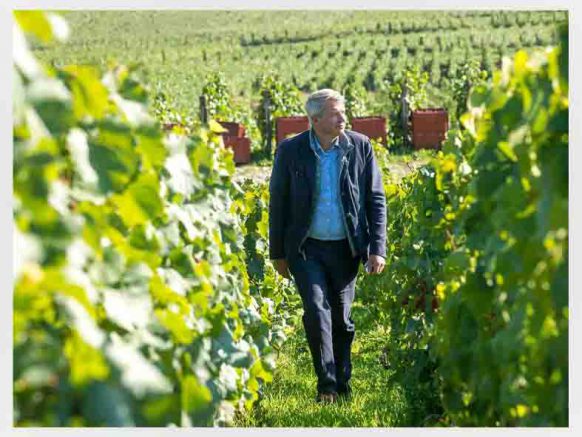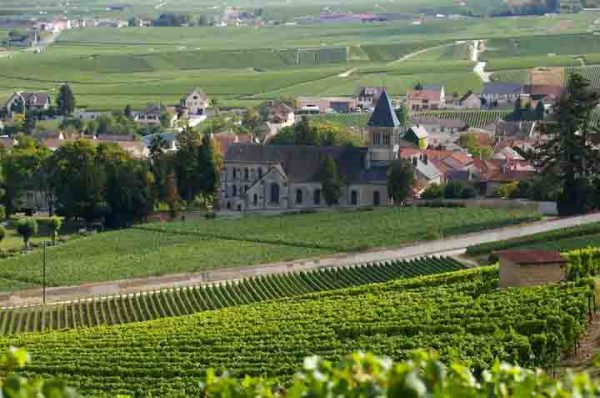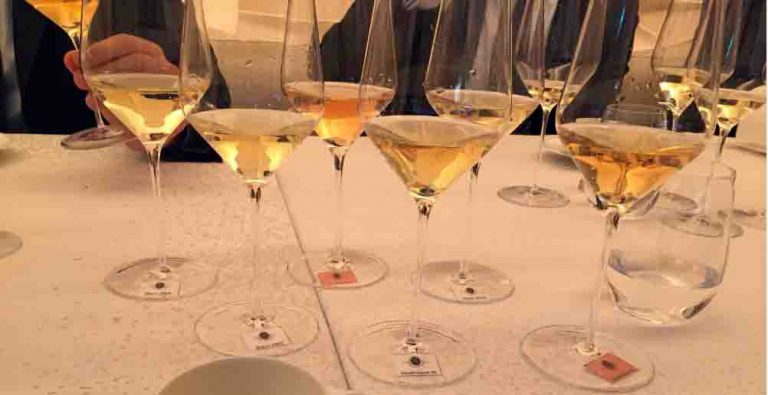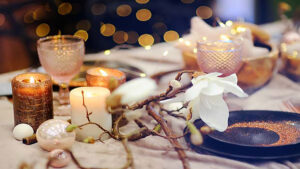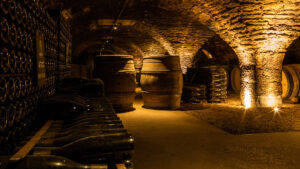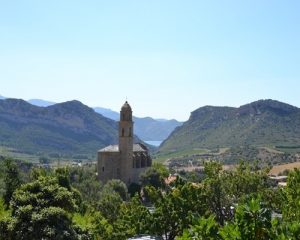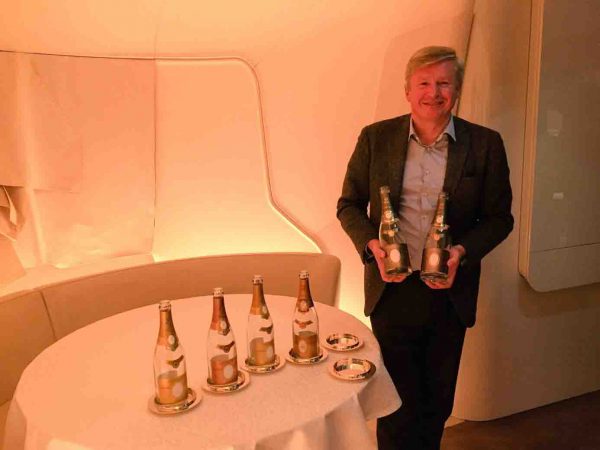 The Roederer house organized a few days ago a breath taking vertical tasting of several vintages of the Cristal cuvée, in white and rosé. At the centre, the latest creation of the smart cellar master Jean-Baptiste Lecaillon: Cristal Vinothèque 1995, a wine aged for 20 years in the cellars of the house. A legendary moment, enhanced by a lunch concocted by chef Thierry Marx at the Mandarin Oriental. And with the complicity of the brilliant chef sommelier David Biraud to ensure a service of wines in perfect conditions. The opportunity to revive the history of this very important house in Champagne, while achieving a meticulous work of craftsman.
The Roederer house organized a few days ago a breath taking vertical tasting of several vintages of the Cristal cuvée, in white and rosé. At the centre, the latest creation of the smart cellar master Jean-Baptiste Lecaillon: Cristal Vinothèque 1995, a wine aged for 20 years in the cellars of the house. A legendary moment, enhanced by a lunch concocted by chef Thierry Marx at the Mandarin Oriental. And with the complicity of the brilliant chef sommelier David Biraud to ensure a service of wines in perfect conditions. The opportunity to revive the history of this very important house in Champagne, while achieving a meticulous work of craftsman.
In 1833, Louis Roederer inherited the Champagne house founded in 1776 by Mr. Dubois and his son. He put a lot of effort in developing the vineyard, to control all stages of production, whereas at the time, great champagne houses used to buy grapes, the fruit having little value. Thus, in 1845, he acquired 15 hectares in the grand cru of Verzenay. By the 1870s, Louis Roederer champagnes were exported to the United States or Russia. It was also in 1876 that the famous “Cristal” cuvée was created for the special purpose of Tsar Alexander II. Several generations succeeded one another, and it is today Frederic Rouzaud, representative of the 7th generation, who runs this family and independent house.
If the United States remains the largest export market for the house, Roederer ships about three million bottles a year around the world.
The vineyard is located exclusively in the grands and premiers crus of the Marne. The house ensures the respect of its different soils, spread over more than 400 plots and seen as true Burgundy climates. The vineyard is divided between the Montagne de Reims, the Marne Valley and the Côte des Blancs. The three champagne grape varieties are planted there.
Under Jean-Baptiste Lecaillon’s impulse, charismatic cellar master and working for the house for nearly 30 years, the vines are now cultivated while respecting soils and organic practices. Of the 240 hectares covered by the vineyard, 103 have been converted to biodynamics, although only a small part has been certified (for essentially administrative reasons).
Jean-Baptiste Lecaillon, oenologist but also agronomist, is a passionate, scholar and wise man. He spent the first five years of his career at Roederer looking through harvest books and weather records to understand, figure out and immerse himself in the spirit of the house. If he has devoured the writings of Goethe (The metamorphosis of plants), those of Dr. Steiner or Japanese farmer Fukuoka to draw valuable lessons in terms of biodynamics or permaculture, he does not make it a religion and acts with pragmatism. “Agriculture is not made to feed man but to make him better.” Quoting precisely Fukuoka, the cellar master likes to say that he practices a “family” viticulture: the team makes its own composts; grafting is done on the spot, the genetic material of the vine remaining internal to the property. A performance for a vineyard of this size! The vines used for the Cristal cuvée, offer a remarkable variety and uniqueness, because they come from 45 villages that have the most limestone soils in Champagne (35% on the Montagne de Reims and 25% at Aÿ). The vines are at least 25 years old because, according to J-B Lecaillon, it is only beyond this age that the Chardonnay loses its varietal character, and that the terroir expresses itself, allowing the champagne to boast the saline characteristic of Cristal. The harvest is obviously done by hand and in the cellar, the pressing is gently managed. Plot-by-plot vinifications respect the origin and allow tracing the grapes: the characters of each cru are preserved until blending. Malolactic fermentations are not systematic, they are partial and random (between 25% and 50%) and maturing is conducted on lees in vats and tuns.
However, even though Jean-Baptiste Lecaillon is influenced by the wisdom of the elders and the history of the house, he can’t stay still: he is full of ideas, and, in his precious cellars, he does not seem to avoid any experimentation. One of the most emblematic ones is emerging: the house is putting on the market a very limited series of cuvées Cristal “Vinothèque”, in white and rosé, from 1995 vintage.
An exceptional tasting to present the Vinothèque cuvée
Cristal 2009 – white
No Pinot Meunier in this blend of 60% Pinot Noir and 40% Chardonnay. Crystal 2009 offers a very aromatic brioche nose, round and harmonious on the palate with an elegant saline finish. J-B Lecaillon said that the Chardonnay – late harvested for 2009 – has no added sulphur, so it has a tendency to oxidize, and thus to lose its varietal side that is not sought for the Cristal cuvée. It reveals pleasant aromas of yellow and white fruits and an elegant vinous finish.
Cristal 2009 – rosé
Mainly from four of the villages chosen for the Cristal cuvée, this 2009 is composed of 55% Pinot Noir and 45% Chardonnay. From a sunny year, this champagne boasts a flamboyant nose of crushed raspberries, perfectly ripe. On the palate the wine is light, subtle and fine, and has a pleasant persistence linked to the depth of its aromas on the finish. Time stopped for a moment…
Cristal 2008 – white
The Roederer house waited a long time before revealing the 2008 vintage of the Cristal cuvée to its customers. The 2009 failed to give way. The reason? Cristal 2008 is a monument! With a temperament, that according to JB Lecaillon, reminds the immense 1996 and 1988. After a summer like the cellar master likes them, dry and fresh, the grapes were harvested late in 2008. Maturities were fresh, and slow, everything happened at the same time. It reveals a very dense nose, but still has a lot to offer. Distinctive, with a remarkable freshness, it boasts a pure palate, with a sharp precision. A classy champagne, with always this delicate saline finish.
Cristal 2002 – white
2002 is an immense vintage in Champagne and Cristal offers a marvellous demonstration of that. Harvests were in advance and besides Roederer picked grapes up a week before everyone else to preserve their freshness. This blend, of 55% Pinot Noir and 45% Chardonnay, enjoyed 5 years of maturing on lees. The result is elegant, concentrated and with fine bubbles. The nose combines subtle white fruit aromas with delicate brioche notes. On the palate, harmony is absolute between a silky texture, an irresistible fruitiness and an exceptional length. It must be said that this 2002 was served with a heart of spaghetti with sweetbreads concocted by chef Thierry Marx. It is impossible to determine if the truffle aromas come from the wine or the dish. The feeling of satisfaction is absolute when you taste this wine so perfectly paired to this dish.
Cristal Vinothèque 1995
Fruit of the creativity of J-B Lecaillon, this wine comes from an unusual experience. The cellar master isolated a small series of Cristal bottles of the 1995 vintage. The wine was matured on laths (horizontal storage) until 2003, allowing it to achieve what J-B Lecaillon beautifully calls its “textural climax”. After disgorging in 2008 with an extra-brut dosage (7 to 8 g), lower than the one usually practiced, the bottles waited another 10 years neck down. This period allowed the wine to concentrate again as oxygen no longer entered the bottle.
The wine is surprising with its extraordinary freshness, right from the nose. Then, on the palate, it displays a range of complex aromas mixing wonderfully ripe yellow and exotic fruit notes. The texture is velvety, dense, the lot has a nice tautness. The wine displays an exceptional concentration. The finish is once again marked by an elegant salinity, delicately refreshing.
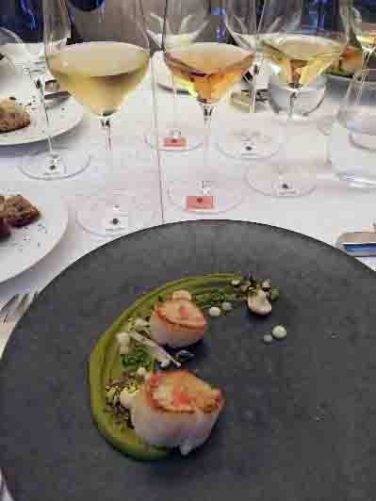
Disgorged in 2010 after eight years on laths, Cristal Rosé Vinothèque 1995 also waited neck down. Maturing on laths gives richness to the wine that reveals a palette of beautiful blooming aromas with white flower and red fruit notes. Its fine texture has an intense finish and exceptional length.
J-B Lecaillon sets these two cuvées of Cristal Vinothèque in the straight line of the Roederer spirit. As a worthy guardian of a precise, clean and straightforward style, and the philosophy of a house that fully assumes its illustrious heritage while looking forward and turning to the future, determined to maintain its position, at the highest level.
See Roederer champagnes currently for sale
Brut 2009
Bettane+desseauve: 18/20
A very fine and subtle nose and a balanced, fine, precise mouth characterise this harmonious champagne.
Blanc de Blancs Brut 2010
RVF: 17/20
This wine is matured on lees for an average of five years. It stands out for its aromas of white fruits, dried fruits, honey and floral notes. On the palate, the attack is sweet and slender, it continues on finesse, elegance and freshness; its finish, with chalky notes, is particularly tasty.
Cristal Louis Roederer
2009 RVF: 18,5/20
2000 RVF: 18/20
Flagship of the house, this cuvée meets the strictest elaboration criteria that require a drastic selection of vintages, crus, grapes and finally wines. Only the Pinot Noir and Chardonnay of the ten most famous crus of the vineyard of the House are kept. In addition, a part of the wines is matured in oak vats to bring the delicate vinosity characteristic of Cristal. The colour, bright pale gold, develops complex aromas of almonds and hazelnuts. Ample, round and unctuous, the Cristal is distinctive for its perfect balance. Note the existence of a rare Cristal rosé of an exceptional quality.
See all Champagne & sparkling wines currently for sale
See all wines currently for sale
Register here to access auctions and fixed-price sales
Receive a free estimate of your cellar
Read further on iDealwine Le Blog:

